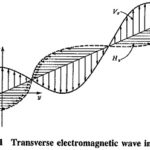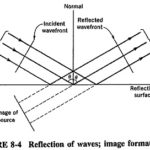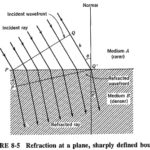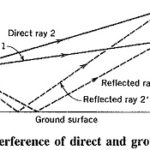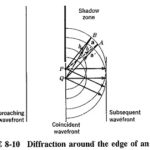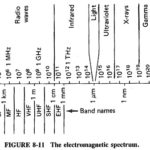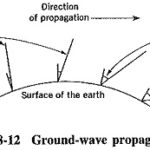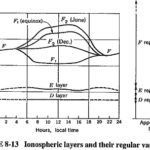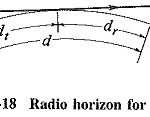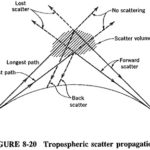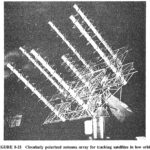Radiation and Propagation of Waves Articles:
Fundamentals of Electromagnetic Waves: Fundamentals of Electromagnetic Waves are energy propagated through free space at the velocity of light, which is approximately 300 meters per microsecond. As the object travelled downward, there would be a path of bubbles generated in the same … (Read More)
Reflection of Waves: There is much similarity between the reflection of light by a mirror and the reflection of electromagnetic waves by a conducting medium. In both instances the angle of reflection is equal to the angle of incidence, Reflection of … (Read More)
Refraction of Waves: As with light, Refraction of Waves takes place when electromagnetic waves pass from one propagating medium to a medium having a different density. This situation causes the wavefront to acquire a new direction in the second medium and … (Read More)
Interference of Electromagnetic Waves: Interference of Electromagnetic Waves occurs when two waves that left one source and travelled by different paths arrive at a point. This happens very often in high-frequency sky-wave propagation and in microwave space-wave propagation. It occurs when … (Read More)
Diffraction of radio waves: Diffraction of radio waves is yet another property shared with optics and concerns itself with the behaviour of electromagnetic waves, as affected by the presence of small slits in a conducting plane or sharp edges of obstacles. … (Read More)
Electromagnetic Spectrum: In an earth environment, electromagnetic waves propagate in ways that depend not only on their own properties but also on those of the environment itself; some of this was seen in the preceding section. Since the various methods of … (Read More)
Uses of Ground Wave Propagation: Uses of Ground Wave Propagation along the surface of the earth and, as previously mentioned, must be vertically polarised to prevent short circuiting the electric component. A wave induces currents in the ground over which it … (Read More)
Sky Wave Propagation Frequency Range: Sky Wave Propagation Frequency Range is the ionosphere is the upper portion of the atmosphere, which absorbs large quantities of radiant energy from the sun, becoming heated and ionised. There are variations in the physical properties … (Read More)
Space Waves: Space waves generally behave with merciful simplicity. They travel in (more or less) straight lines! However, since they depend on line-of-sight conditions, space waves are limited in their propagation by the curvature of the earth, except in very unusual … (Read More)
Tropospheric Scatter Propagation: Tropospheric Scatter Propagation is a means of beyond-the-horizon propagation for UHF signals. Tropospheric Scatter Propagation uses certain properties of the troposphere, the nearest portion of the atmosphere (within about 15 km of the ground). Properties of Tropospheric Scatter Propagation: As … (Read More)
Extraterrestrial Communications: The most recent, and by far the fastest-growing, field of communications involves the use of various satellite relays, of which the first was launched in 1957,-12 years after the practicability and orbital positioning of stationary satellites … (Read More)
